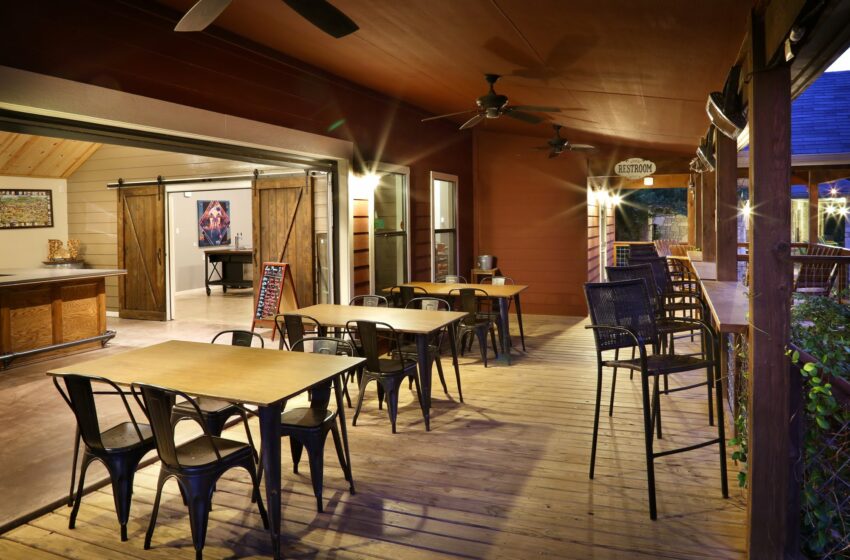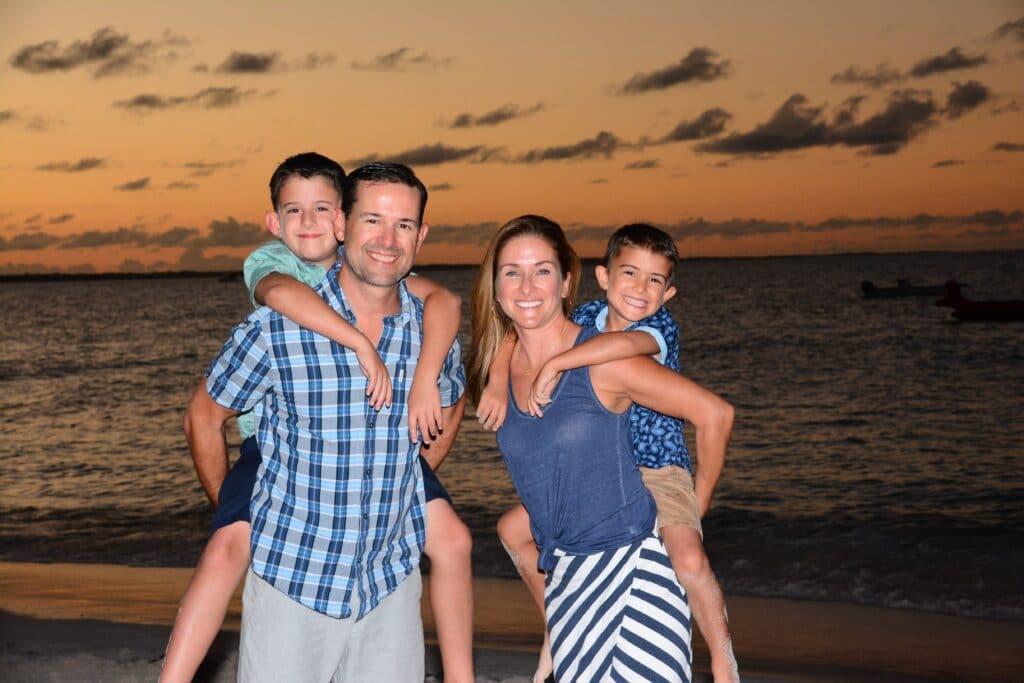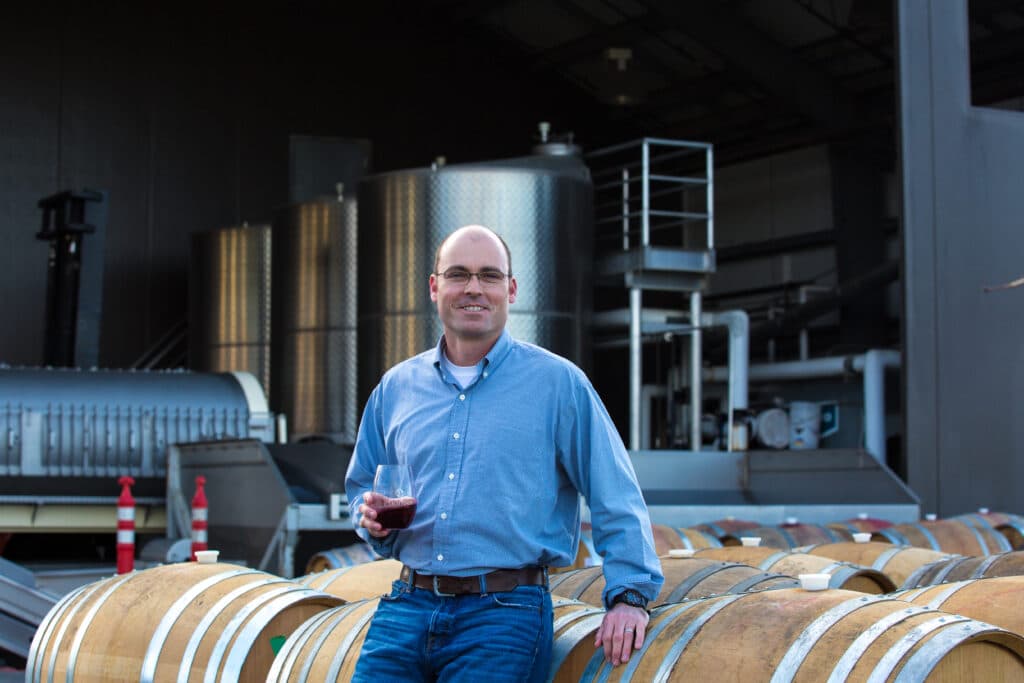A Harvest of Resilience

Two Dripping Springs wineries demonstrate how Texas business owners persevere, through pandemics, winter storms, and more.
The grapevine is one of the hardiest plants alive. It can live 120 years or more and survive droughts, extreme temperatures, and even many wildfires. In fact, the massive wildfires in the California wine country had little impact on the wine industry, except for tourism. The grapevine is resilient, predictable, and steadfast, even in some of the harshest environments.
But nothing prepared wineries for COVID-19. While the vines still produce, tasting rooms have been forced to shutter. Only recently have wineries in Texas been allowed to reopen, but with plenty of requirements to keep people safe. Wineries have rallied, coming up with creative ways to draw people in without putting them at risk.
And just as wineries were hitting their stride at the beginning of 2021, with owners investing thousands of dollars into new operating models to support safer tourism, February’s winter storm hit Texas hard, forcing them to close once again for a couple of weekends. To say the past year has been rough on Texas wineries is an understatement. But with all of the challenges have come fruit—the realization that wineries can be as resilient as the grapevines that serve as their foundations.
The Birth of Dripping Springs Wine Country
Nate Pruitt was born in California. He experimented with wine and beer making for years, and when he moved to Texas in 2003 and visited wineries in Fredericksburg and Spicewood with his wife, Angie, he decided it was time to follow his dream of building his own winery.
“After making wine for most of my adult life, I was ready to take the leap,” says Pruitt. “Behind California, Texas is the second most trafficked state for wine. I loved Dripping Springs because of the people and the location: close proximity to Austin, on a major corridor in the Texas wine country, and plenty of land. It was the perfect place to live and start a winery.”
Pruitt created Bell Springs Winery in 2010, the first winery in Dripping Springs, just off of Highway 290. At the time, the only other alcohol establishment in town was a distillery, Dripping Springs Vodka. Today, there are at least 50 wineries in the area, plus several distilleries and breweries.

With Hays County being dry until 2005 and so many wineries an hour west, getting the attention of tourists and Austinites looking for a unique day trip should have been a challenge. But remarkably, Bell Springs Winery experienced organic growth without much effort. “People just started showing up,” Pruitt says. “The first year, we did 300 cases and stopped selling certain bottles just so we had enough for people to taste. But as you start to grow, it’s easy to move too fast and get in over your head. Expenses can get out of control quickly.
“Winemaking is capital intensive and seasonal. The more wine you make, the bigger your equipment needs to be, and you can only produce during a certain time of year. Beer is different. You can make beer 365 days a year. I chose early on to not get investors, start small, and go direct-to-consumer. I can control growth, make as much or as little wine as I want, and add equipment on demand. I decided not to hire a big staff, but instead to grow incrementally, keeping it simple and layering in new ideas over time.”
About four years in, Bell Springs Winery was at a point where Pruitt could increase production due to strong tasting rooms sales and a growing wine club. He also increased his product line, adding different varietals, as well as a brewery, food options, and live music with local talent. And then COVID-19 hit.
Risks and Resilience
While there’s no sugarcoating the impact the pandemic has had on tourism, many of the area wineries took a creative approach to survival. They used the downtime to find ways to modify their operating models, reinvent themselves entirely, or try out new ideas.
“The hardest thing for wineries is that Texas laws didn’t know what to do with us,” says Pruitt. “We got lumped in with bars. The Texas Alcoholic Beverage Commission [TABC] told us if we switched to being a restaurant, we could reopen. We worked through making that happen, pivoting completely to a restaurant model, but then the government told us and TABC we couldn’t do that. After all the investment and effort, we got lumped in with everyone else and were shut down completely. But TABC came through and got us reopened again under the COVID restaurant guidelines, and now, most wineries now can operate with COVID procedures in place and food.”
But even with the reopening, wineries have suffered incredible losses. Sales have dropped dramatically, and they are limited in the number of days they can be open because of staffing. Many of their employees had to find other work during the shutdown. Winery tourism companies shut down as well. There was no way to know when or how many people would show up.
“At Bell Springs, we decided we had to make changes if we wanted to survive,” says Pruitt. “We moved from allowing people to drop in to requiring reservations for any wine tasting. Even though this reduces our numbers, it allows us to keep the experience more intimate. Now, people enjoy wine flights outdoors under the oak trees and sky instead of inside at a crowded bar. If someone wants to book an indoor room for a private wine tasting party, they still can for a certain number of people, and the server can talk with them about each wine. We couldn’t really do that before, but it gives us greater flexibility and allows our guests to customize their experience.”
Bell Springs Winery and others in the area have also developed virtual wine tastings, where the winery ships participants wine ahead of time and then hosts a webinar. As people become more comfortable venturing further from home, the Dripping Springs wineries are just 30 minutes away but make guests feel like they are far from the hustle and bustle of the big city.
The premise of Bell Springs Winery and many other local wineries is to give visitors a relaxing experience, where they can stay all day or hop from winery to winery and take home wine and great memories. “The Dripping Springs Chamber of Tourism does a great job promoting tourism,” says Pruitt. “There are a lot of wineries, breweries, and distilleries in the area now, and we all thrive off of each other. Each one of us offers a slightly different vibe for guests to experience, and there are plenty of tourists to go around.”
Just down the road from Bell Springs Winery is Parmeson Wines, owned by a Houstonian-turned-Californian from Sonoma, Tom Parmeson. Paremson Wines was open only two weekends before COVID shut them down. Just as they were beginning to reopen, the winter storm closed them again. Now, Parmeson is looking forward to the busy spring season, with plenty of lessons learned from the wildfires his property endured in California, to COVID and the Texas winter storm.

“I had all kinds of plans for Parmeson Wines when I moved to Texas from my vineyard and winery in Sonoma,” says Parmeson. “Things didn’t work out the way I’d hoped, and we’ve had a lot to overcome, but it’s all just part of it. I love this community and am doing all I can to offer people a safe, positive experience.”
Like Nate Pruitt, Parmeson moved from indoor wine tasting to outdoor wine flights, with reservations required for any indoor private tastings. “For many wineries, wine tastings have been indoors, but COVID made us rethink things. We had to move operations outdoors, but we see now how much better that is for guests,” he says. “Instead of walking into a tasting room that’s 10-people deep, you can order what you want to try and enjoy yourself outside without crowds.”
The outdoor approach will come with risks, Mother Nature being the biggest threat, but both Pruitt and Parmeson have indoor or covered space to accommodate small groups should the weather turn. There was nothing they could do with the most recent winter storm, but Central Texas isn’t known for its winters. Summers bring heat, and the giant trees and country breeze make it feel much cooler, especially when sipping a nicely chilled rosé or frosty craft brew.
As COVID restrictions lift, wineries have more options, but most plan to keep many of their modifications in place. Much like grapevines, the resilience of Texas wineries is remarkable. Those that have adapted to all that nature has to throw at them are finding they are stronger than they imagined. The past year has not been kind in some sense, but it has also given wineries time to reflect, reimagine, and experiment.
“I think we’ve all learned that you can’t always predict the future,” says Pruitt. “Texas wineries are booming, and I don’t see anything changing that. All of us are just trying to give people a unique experience they will remember, especially when we’ve all been through so much this year. COVID and the winter storm showed us how important it is to enjoy the simple things, like sitting out in the country with friends and a glass of wine or beer, listening to live music, and letting the day just melt away.”






